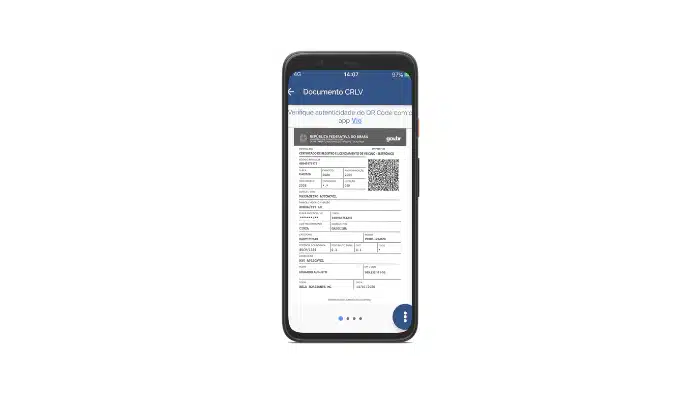Digital Identity Document RG – Get yours today
How to Create a Digital Identity – Get a New ID
You can read the information below to understand the procedures required to obtain a new identity card.
How to schedule an appointment to get a new identity card: tap the button below and proceed to choose the website to schedule identity. IMPORTANT: each state has its own website, so pay close attention!
Let's go step by step to get your digital identity:
Step 1: Access the Official Portal or Application
Search for Service: Identify the official portal or application of the government or authorized entities that offers digital identity. In Brazil, an example is the application “Gov.br“.
App Download: If necessary, download the corresponding app from your smartphone's app store (Google Play Store for Android or Apple App Store for iOS).
Access to the Portal: If you prefer to use a computer, access the official portal, such as the “Gov.br” website.
Step 2: Register now
Personal Information: Fill in the requested personal data, such as full name, date of birth, CPF and email.
Account Creation: Create an account by choosing a username and a secure password. In some cases, you may need to confirm your email or phone number to activate your account.
Step 3: Submit Documents
Document Scanning: Scan the required documents, such as your ID, CPF and recent proof of residence. Make sure the scans are clear and legible.
Upload Documents: Access the document submission area on the portal or application and upload the scanned files.
Data Verification: Please review all submitted data and documents to ensure they are correct and complete.
Step 4: Authenticate your Identity
Biometrics: Use your smartphone camera or computer webcam to capture your biometrics (photo and, in some cases, fingerprint).
Additional Methods: Some services may require you to answer security questions or use other authentication methods, such as facial recognition.
Step 5: Confirm the Process
Final Review: After authentication, review all data and documents again to ensure there are no errors.
Confirmation: After review, you will receive confirmation that your digital identity has been successfully created. This confirmation can be sent via email or directly in the portal/app.
Required Documents
To create your digital identity, you will need to gather the following documents. Below is a detailed step-by-step guide on how to prepare each of them:
- Identity Document (RG):
- Validity Check: Make sure your ID is in good condition and within its validity period. Damaged or illegible documents may be rejected.
- Digitization: Use a scanner or scanning app on your smartphone to scan your ID. Make sure all information, such as document number, photo, signature and issuing authority, is clearly visible.
- File Format: Save the scanned document in a format supported by the portal or application, usually PDF or JPEG.
- CPF (Individual Taxpayer Registry):
- Validity Check: Check that your CPF number is correct and active. If you do not have a physical CPF card, you can use the number on your ID or driver's license or access the digital version on the Federal Revenue website.
- Digitization: If you have your CPF card, scan it. If not, take a screenshot or photo of the digital document.
- File Format: Save the scanned file as a PDF or JPEG.
- Proof of Residence (Recent):
- Accepted Documents: This can be a water, electricity, telephone bill, or any other official document that contains your full name and address. The receipt must be recent, usually issued within the last three months.
- Digitization: Scan the receipt using a scanner or scanning app. Make sure all the information is legible.
- File Format: Save the file as PDF or JPEG.
- 3×4 Photo (Digital):
- Take the Photo: Use a digital camera or your smartphone camera to take a 3×4 photo. The photo must be recent, with a white background and without accessories that cover the face (such as sunglasses or hats).
- Edition: If necessary, edit the photo to adjust the size and ensure that it is in the 3×4 format. There are apps and online services that can help you adjust the photo correctly.
- File Format: Save the photo in JPEG or another format accepted by the portal or application.
Additional Tips for Document Preparation:
- Image Quality: Make sure all scanned images are of high quality and that all details are clearly visible.
- File Size: Check the size of the scanned files. Some portals or applications have size limitations for uploads, so adjust the resolution if necessary.
- Organization: Keep all your files organized in a specific folder on your device to make the upload process easier.
By gathering and preparing these documents as detailed above, you will be ready to begin the process of obtaining your digital identity with ease and efficiency.
Tips and Care
When using your digital identity, it is essential to follow some practices to ensure the security and efficiency of its use. Here is a detailed step-by-step guide to help you:
- Keep your Data Updated:
- Regular Check: Periodically, access the portal or application where your digital identity is registered and check that all your personal information is correct and up to date.
- Information Update: If there are any changes to your personal information, such as your address or phone number, update this information in the system immediately. This can prevent future problems and ensure that you receive all important communications.
- Correct Documentation: Whenever necessary, submit updated documents that prove the changes made to your personal information. This may include a new proof of residence or a new identity document.
- Protect your Device:
- Strong Passwords: Create strong, unique passwords to access your device and digital identity app or portal. A strong password should contain a combination of uppercase and lowercase letters, numbers, and special characters.
- Biometric Authentication: Use biometric authentication, such as fingerprint or facial recognition, whenever possible. These methods are more secure than using passwords alone.
- Security Updates: Always keep your device up to date with the latest versions of the operating system and applications. Updates often contain important security fixes.
- Antivirus: Install and keep up to date reliable antivirus software on your device to protect against malware and other threats.
- Be wary of fraud:
- Beware of Phishing: Be wary of fake emails, messages, and websites that try to trick you into stealing your personal information. Never click on suspicious links or provide your personal information in response to unverified requests.
- Verify Legitimacy: Before sharing any personal information, make sure the website or app is legitimate and trustworthy. Look for security signs, such as a padlock icon in your browser’s address bar and URLs that begin with “https.”
- Restricted Sharing: Never share your personal information, such as passwords, CPF number or other sensitive data, with unknown people or organizations.
- Report Suspicious Activity: If you suspect any fraudulent activity related to your digital identity, report it immediately to the competent authorities or to the technical support of the portal or application you use.
By following these tips and precautions, you will be able to use your digital identity safely and efficiently, enjoying all the benefits of this technology with peace of mind.





